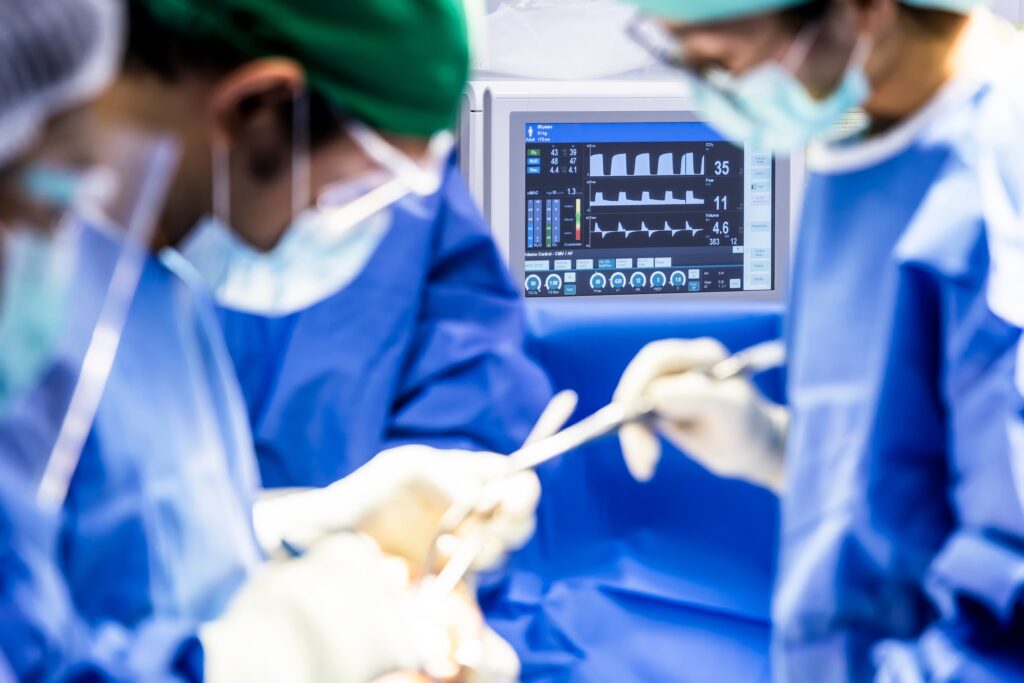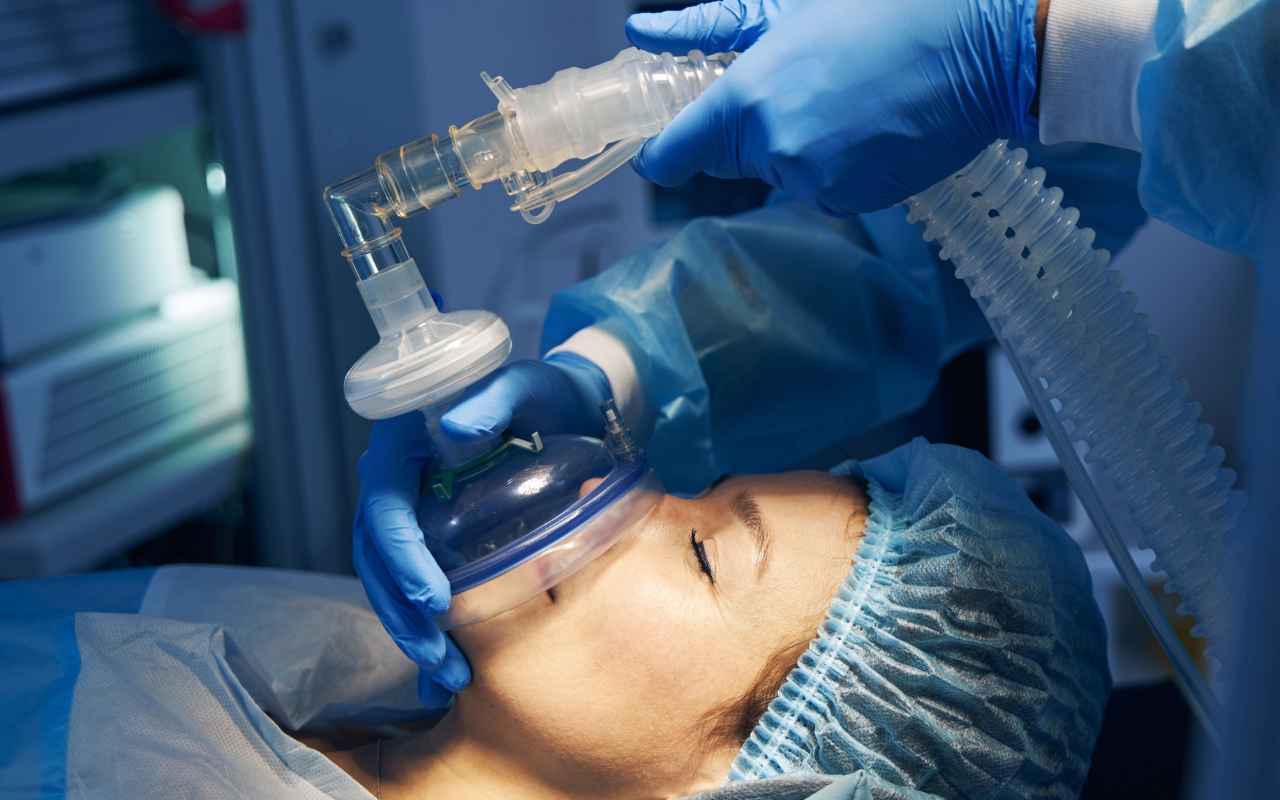The phasing out of anaesthetic gasses with high climate impact is having a positive impact on health care’s carbon footprint
Human health is inextricably linked to climate health. As demonstrated by the Federal Government’s recently released National Climate Risk Assessment, climate change presents a significant risk to health through heat related illness, extreme weather events, loss of infrastructure, supply chain issues and spread of infectious diseases.
Unfortunately, the health care system has a significant carbon footprint of its own, contributing about 4% of total greenhouse gas emissions. Operating rooms alone are a major contributor, partly due to the use of anaesthetic gases such as desflurane, sevoflurane, and isoflurane.
New research published in the Medical Journal of Australia has examined the CO2e emissions rate for anaesthetic gases in Australia from 2002 – 2022.
The researchers found the CO2e emissions rate for anaesthetic gases increased during 2002–2008, but declined during 2017–2022 as use of desflurane was reduced.
“The 100-year global warming potential of desflurane (2590 CO2e) is substantially higher than that of sevoflurane (144 CO2e) or isoflurane (539 CO2e), and phasing out the use of desflurane could reduce the overall carbon footprint of anaesthetic gases,” the researchers wrote.

The trouble with desflurane
Desflurane was developed in the 1980s and approved for medical use in Australia in the 1990s. Along with isoflurane and sevoflurane, these anaesthetic gases were associated with less airway irritation, more rapid waking, and greater safety at deep anaesthesia levels than older gas alternatives.
However, these gases — especially desflurane — have been shown to react with the carbon dioxide absorbent in anaesthesia circuits to produce detectable levels of carbon monoxide through degradation of the anaesthetic agent.
“Desflurane was not only the major contributor to volatile anaesthesia-related emissions; desflurane emissions alone would have contributed 0.18% of estimated total health care emissions in Australia during 2014–15,” the researchers wrote.
Increased awareness driving change
As awareness of the climate impact of desflurane has grown, professionally bodies such at the Australian and New Zealand College of Anaesthetists have been calling for its removal from use.
Desflurane has been removed from pharmaceutical formularies in Western Australia and New South Wales, but these bans only apply to public hospitals, and the decline of its use has been slower in private hospitals, where most elective surgeries take place.
“Lack of awareness of the environmental harms, clinician preferences, promotion of desflurane, and ease of access also influence clinicians’ choosing desflurane, especially as the higher cost of the agent is not directly borne by the provider or patient,” the researchers wrote.
“However, a range of interventions have successfully reduced the use of desflurane, including education and awareness campaigns, forming green environmental staff groups, and environmental modifications, such as removing desflurane vaporisers from operating rooms, providing equipment and training in total intravenous anaesthesia, and promoting low flow anaesthetic practices.”
The researchers hope that ongoing education and increased awareness will help expedite the reduction in desflurane use nationally.
“Leadership by private hospitals is needed, as governments are less able to influence the anaesthetic formularies of private hospitals,” they wrote.
“The Australian Commission on Safety and Quality in Health Care Environmental Sustainability and Climate Resilience Healthcare Module, an action framework for optimising the quality and safety of care in public and private health services while reducing the contribution of health care to climate change, will include such measures in several private health care facilities (to be published in late 2025).”
Read the research in the Medical Journal of Australia.
Annika Howells is the sub-editor of the MJA’s InSight+.
Subscribe to the free InSight+ weekly newsletter here. It is available to all readers, not just registered medical practitioners.

 more_vert
more_vert
Dr Lindholm I think it’s fantastic that you are driving an electric car, have solar and do your own organic farming and is doing ultra low flows in your practice. It is always great to hear people are making efforts to decarbonise.
You are absolutely right in that other industries are the main sources of global N2O production but that doesn’t take away from the fact that all industries need to get to net zero including healthcare, and N2O and Desflurane unfortunately are one of the biggest culprits of green house gas emissions of operating theatre.
As clinicians we have control over our theatre and hospital environment and any effort to reduce emissions should be commended just like your efforts to do so in your own home.
I hope you continue to have a great day, and keep doing your part for the planet and the population 🙂
Normally id comment anonymously but this deserves a name attached. For context i extract 4T of Co2 from the atmosphere to make olive oil, mulch 50-60 t of prunings into my red clay soil between rows, generate twice what i use with 32 kW solar, drive an electric car, yet i use N2O and desflurane as i do a lot of very long surgeries on very large patients. N20 is a bad greenhouse gas but barring hospital pipeline leaks is irrelevant compared to automotive, agricultural, industrial sources etc. Rather than banning drugs which have specific benefits we should concentrate on minimising by ensuring ETT use to enable flows as low as 300 ml/min as I’m doing presently. To this end the anaesthesia machines need to be well maintained and side stream gas analysis fed back into the circuit. With proper long acting analgesia and depth of anaesthesia monitoring i rarely use more than 0.8 MAC of des in 35% N20 (Currently 4 ml desflurane /hour). TIVA has its own environmental risks and a logarithmically higher rate of awareness if recent events in Victoria are anything to go by and i bet the TIVA enthusiasts aren’t including that in their consent or they wouldn’t have too many takers. No discussion like this should be had without both sides being presented. Nuance is everything in anaesthesia. I assume the authors and desflurane banning advocates never drive in internal combustion car, obviously walk or ride to work and never take a plane on a holiday or overseas conference. Have a great day everyone …I am.😀
This is very honourable but the real culprit is all the disposable plastic waste which is not recyclable